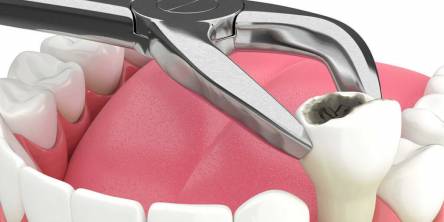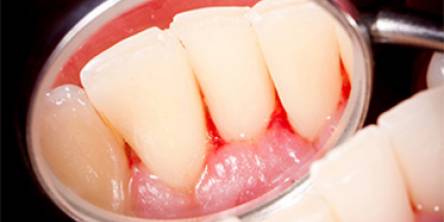Dental Implant Procedure: What to Expect

Dental implants fundamentally changed the concept of replacing teeth. Whether a person loses a tooth to decay, injury, or another issue, dental implants give a solid and much more beautiful result. However, the process involved in getting a dental implant takes several steps, and understanding what to expect during the procedure helps manage any kind of anxiety and prepares one for it. This long overview is going to help you through all stages of treatment of a dental implant, from initial consultation to final restorations.
Pre-Procedure Preparations
The journey towards a beautiful set of teeth using dental implants has to start with proper planning. The first process is an assessment done by your dentist or the oral surgeon of your case. With the help of this consult, your dental provider will evaluate your dental condition, find out the expectations of the treatments you plan to have, and identify if you are suitable for dental implants. This assessment may involve X-ray recordings, three-dimensional images, and dental impressions that determine the condition and type of the jawbone. All such imaging tools assist the professional in making a general treatment plan that fits the needs of the client properly.
Now and again, your dentist may discover that the jawbone is not as compact as it ought to be for a dental implant. Such cases require bone grafting Some of the reasons why bone grafting is recommended when include the following: Another process is called bone grafting which involves filling the area that is to receive an implant with either the patient’s bone or with an artificial one. it offers a stable ground for the implant to serve its intended function for several years.
When all the assessments and other processes have been done, an appropriate course of action to be taken is commenced. This kind of treatment plan shows the number of implants to be done the type of restoration that is expected to be done either crown, bridge, or denture, and the total period that is expected to be taken in the whole process. Hence through gaining awareness of the plan, they will be in a position to know what to expect next as the process of the dental implant transpires.
The Dental Implant Surgery
The most essential part of a dental implant is the surgery itself. Understanding what is involved in each step of this surgery will help you feel more comfortable and confident about this treatment.
First of all, anesthesia and sedation: though a dental implant procedure is usually done using local anesthesia to numb the area around the implant site, depending on the patient's comfort level and procedure complexity, a dentist might also offer nitrous oxide or intravenous sedation options for relaxing during surgery.
The surgery begins with placing the implant into the jawbone. Here’s how the process unfolds:
Incision in the gum tissue: Your dentist or oral surgeon will make a small incision in the gum tissue to expose the underlying bone.
Drilling the bone: A specialized drill is then used to create a small hole in the jawbone where the implant will be inserted. This step is done with great precision to ensure the implant is placed at the correct angle and depth.
Inserting the titanium implant: The implant, which is made of biocompatible titanium, is then screwed or tapped into the prepared hole. Once in place, the gum tissue is closed with stitches, covering the implant.
This is followed by the healing process of the placed implant, osseointegration. The formation of a solid and stable base for the artificial tooth occurs with the implant engaging the living jawbone. This very critical healing phase for the success of the implant normally takes quite several months.
In some instances, the dentist can offer a provisional restoration to wear throughout the healing period. This could include a temporary crown or bridge to maintain a normal appearance and some functionality during the healing process.
One of the common questions people ask before undergoing dental implant surgery is, "can you wait too long to replace teeth?" The answer is that waiting too long can lead to bone loss in the jaw, making it more challenging to place implants without additional procedures like bone grafting. Timely replacement is essential to prevent further complications and ensure the best outcome for your dental health.
Post-Surgery and Final Restoration
The next thing to do after the implant has fused with the jawbone is to prepare the final restoration. This care and recovery period is as important to the success of the treatment process. A little bit of soreness, swelling, and oozing of blood may be experienced after the surgery. Your dentist will provide very clear guidelines, such as guidelines on how to manage the pain, eating a food-mush diet, and keeping the site clean.
The next step, after healing has occurred at the implant site, is to place an abutment. An abutment is a small connecting device attached to the implant that supports the final crown. To place the abutment, the dentist will make a small incision in the gum to reveal the upper part of the implant. He will then attach the abutment to the implant. After that, the gum is allowed to heal around it for a few weeks.
The final step in a dental implant procedure is placing the crown, which is made to match the color, shape, and size of the teeth. This ensures an integrated, attractive appearance that blends with the patient's remaining natural teeth. By locking the crown into place on the abutment, the new tooth is now ready for action. This is the final stage of a dental implant, leaving the patient with a refurbished smile that looks and feels like it was born that way.
Long-Term Care and Maintenance
However, even after the implant has been done, the following stage consists of constantly practicing ways to keep it healthy and prolonging its existence as a real tooth. It was important to brush regularly, but not too vigorously to avoid damaging the already weakened teeth; the same applied to the use of a floss and an antibacterial mouthwash. These habits prevent infections and keep the gum tissues surrounding neighbors free from various health risks.
This together with home care includes occasional dental control visits where your dentist can examine the condition of the implant as well as the issues of the related tissues. This makes it easier the consider other related issues like peri-implantitis which is the inflammation of the tissues around the implant this can also be treated to enhance the success of the implant.
Despite the high rate of success that dental implants offer any person even if they were missing some important teeth then it is important to know different complications that may arise all the time. This is because implants may at times fail to function effectively because of infection, additional harm to the nerves, wrong position, or weak bond with the adjacent bone tissue. However, the overwhelming majority of them are characterized by long-term and stable outcomes if the necessary measures are taken to maintain the achieved effect and adhere to regular check-ups.
Conclusion
The dental implant treatment covers an all-rounded procedure, from consultation to restoration. Knowing what happens at each step can help a patient feel more comfortable and confident about the treatment. Dental implants are long-lasting and attractive ways to replace missing teeth so that function and appearance can be restored. If you are considering dental implants, consult your dentist to find out if this type of treatment is appropriate for you, and he will guide you on the path to a healthier, more confident smile.
Similar Articles
Ah, the bittersweet moment when a tooth has overstayed its welcome. It’s been with you through thick and thin—chewing your favorite snacks, smiling in photos, and grinding during those stressful nights. But now, it’s time to part ways
Learn 5 signs you may need dentures and discover the steps to get started for a healthier smile and improved quality of life.
Boost patient trust and diagnostic accuracy with high-quality intraoral cameras. Enhance care, improve communication, and streamline operations in your dental practice!
Imagine this: You just walked out of the dentist's office after your laser gum contouring procedure, and your smile is on the verge of greatness: no more gummy grins or uneven gum lines. You’re practically ready to hit the red carpet. But hold up — what happens next? How fast can you expect to heal after your gums get their laser makeover?
Have you ever wondered how orthodontic treatment has evolved over the years? Are you curious about the latest innovations in teeth straightening technology? Have you heard about Invisalign but aren't quite sure how it works or if it's right for you? If you've found yourself pondering these questions, you're not alone.
Gingivitis is an inflammation of the gums that often develops unnoticed in the early stages. However, if left untreated, it can lead to severe complications. In this article, we look at five essential facts about gingivitis that will help you better understand this disease and take the necessary steps to prevent and treat it.
Everyone is looking for that movie star smile but we think to ourselves that it’s going to cost too much money and so we give up on the dream. You would be surprised at what can be achieved at your local dental clinic and people have gone in through the doors and came out a short time later with an unbeatable smile that may be even better than the TV and movie stars that we see every single day
Cosmetic dentistry is a branch of dentistry that focuses on enhancing the function and appearance of a patient's smile. Cosmetic dentistry near you is frequently elective, but it can provide numerous restorative benefits. Depending on the type of cosmetic treatment you have, most are rather easy, while some are more difficult
Tooth pain is a common but frequently misunderstood condition that can have a substantial influence on one's quality of life. Tooth pain can occur for a variety of causes, ranging from minor, short-term sensitivity to severe, devastating pain.









